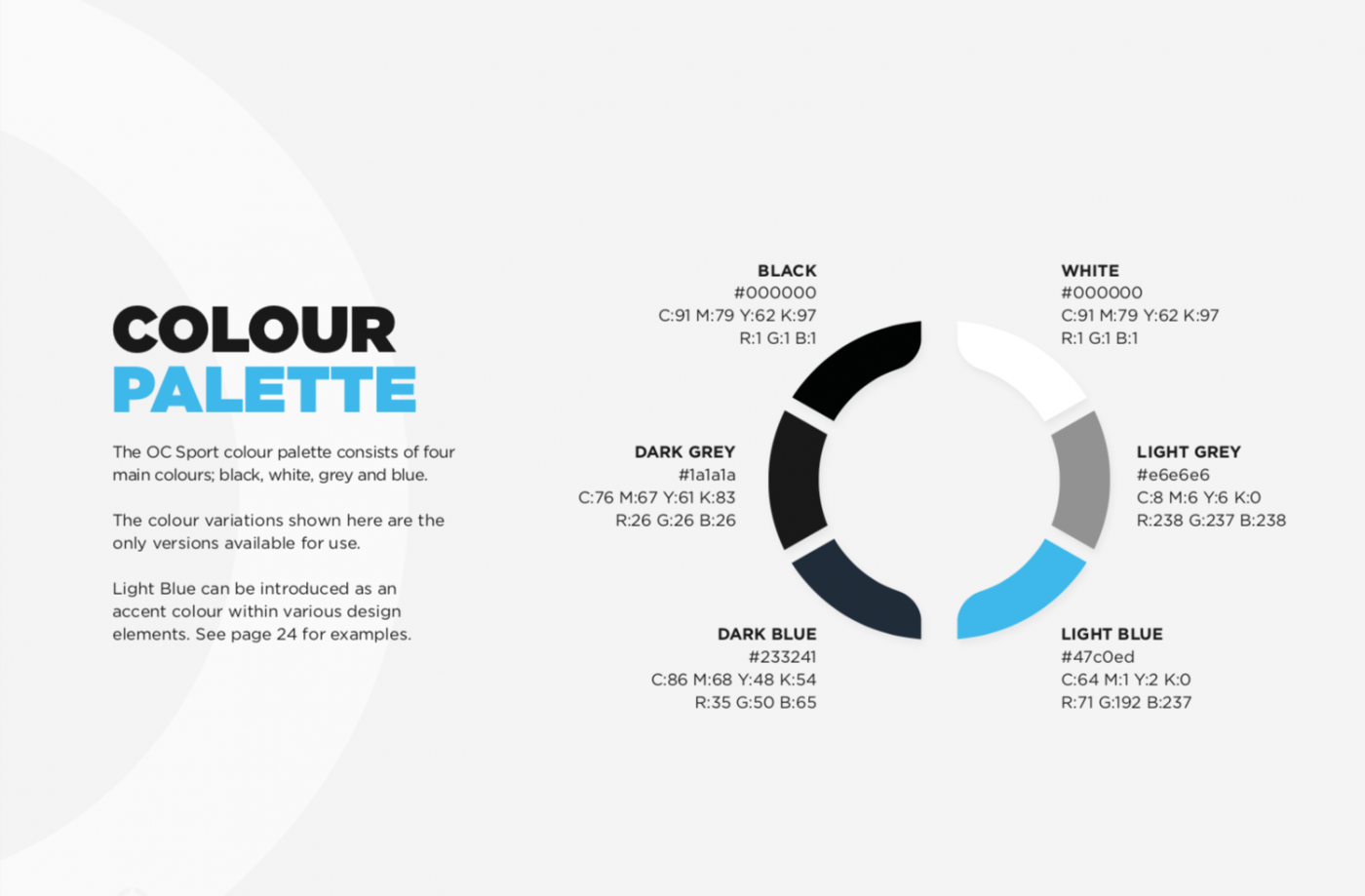Connect
There are a multitude of reasons for choosing to rebrand your company. No matter the motive, deciding it’s time to rebrand is not something to underestimate. Beyond ‘just’ creating a new visual identity, you must consider the long term goals of the company, its personality and position in the market. It is a complex process, which if done right can take your company into its next phase with an identity which best reflects your values.
A rebrand could incorporate a new visual identity including name or logo, or it might be subtler, like a shift in messaging to communicate your brand values more effectively.
In 2018 we rebranded OC Sport to reinforce our position in the marketplace and to celebrate our 20th anniversary as a pioneering event creator and rights holder. Here are some tips and questions to ask yourself if you’re considering a rebrand.
Ask yourself why
The first phase of a rebrand strategy should start with understanding the business reasons that are driving the rebrand. Does your brand no longer reflect who you are? Do you need to accelerate growth? Are you launching a new product or entering into a new market? Do you want to appeal to a new audience? Are your competitors influencing your decision? Be clear on these strategic goals first before you start.
Define who needs to be involved and at what stage
Rebranding is extremely complex and so it’s important to have the right people involved at each stage.
Consider when decision makers and company leaders need to be involved and be clear on who has final sign off.
Also consider how the news is shared with the wider internal team. Involving employees early is beneficial as it helps them understand the reasons for the rebrand, to feel involved and to connect with the new brand. Share updates internally at key stages before they are made public.
Analysis of your current position
The goal in this phase is to understand your current brand perception and competencies. It’s important to look at your position in the market and how you are viewed to avoid operating from an internal perspective only. Ask yourself, where are you now and where do you want to be?
To do this, consider the following questions:
- Assess your brand’s strengths and weaknesses. What is the current perception of your business?
- Does this perception fit with how you want your business to be seen? If not, use this to redefine your brand proposition, values and key messages.
- Who are your competitors?
- Who is your target audience?
- Define your tone of voice
Using the key messages and values defined in the previous stage, you can now define your tone of voice. This is how you communicate about your business through words. Just as it’s important to have a consistent look and feel across visual elements of your brand, so it’s also important to ensure that the words you use are consistent, ensuring your company’s personality is expressed consistently through written content.
Build your brand identity
This is where you develop the visual elements to communicate your brand and your new positioning. This could include a new name, strapline, logo, colour palette, imagery or fonts.
Developing a brand guidelines document which determines how these assets are used in conjunction with your tone of voice will ensure consistency in the application of your brand across different marketing materials.

Build your website
Your company website is one of your most powerful marketing tools. It is often how potential clients find out about you, your expertise and the services you offer. It could influence their motivation to work with you.
Your website is like your shop window and it should bring together your tone of voice and visual elements to best reflect your brand’s personality.
At OC Sport, we have a fantastic in-house web development team who are able to keep our online presence strong and noteworthy.
Consider what else needs rebranding inline with your new identity. This could include social media platforms, email marketing templates, business cards, email signatures, company stationary, company pitch decks and proposal templates. They should clearly link to your brand identity.
You’ve done the ground work, now it’s time to let people know about your new identity. Consider the different stakeholders involved, and the best time and way to tell them.
Create other marketing materials
Consider what else needs rebranding inline with your new identity. This could include social media platforms, email marketing templates, business cards, email signatures, company stationary, company pitch decks and proposal templates. They should clearly link to your brand identity.

Plan for your announcement
Make it a priority to reveal the new identity to employees first. Launching internally will help employees connect with the new brand and the company vision.
If you have any key partners, you may also consider informing them confidentially before the public reveal. This is a great way to demonstrate the trust and value you put in your external stakeholders.
Consider the best public announcement format for you:
Rebranding your business is no small undertaking. It takes time and effort. But if done for the right reasons, it can help launch your company into its next phase with an identity which best reflects your personality and business objectives.
- Do you need to organise an event?
- Will you distribute a press release?
- Will you proactively target media for interviews with key company personnel?
- How will you leverage your social media following to get your message across?
- How will you maximise your new website’s SEO?


